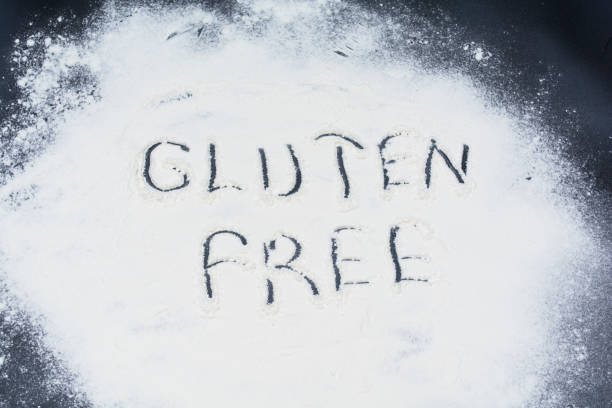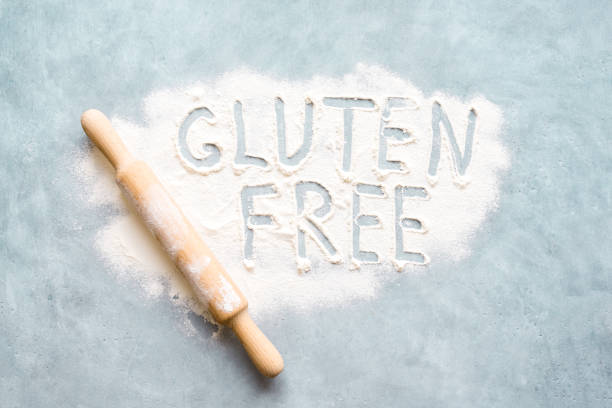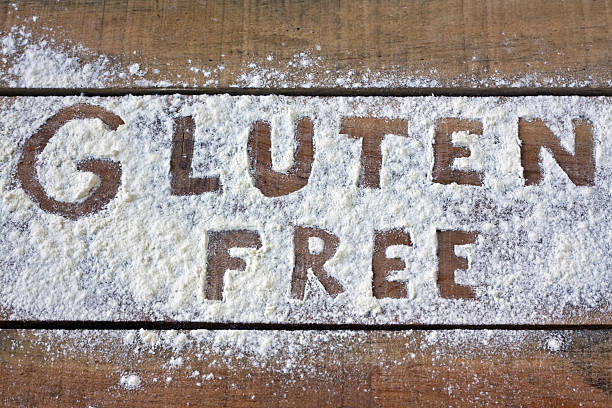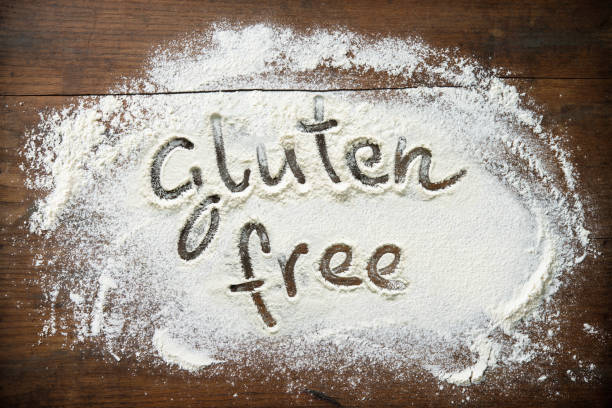What Is a Gluten-Free Diet?
A gluten-free diet removes all foods that contain gluten, a protein found in wheat, barley, and rye. This diet is necessary for people with conditions like celiac disease or gluten sensitivity. However, many others choose to follow it for personal health reasons, believing it may improve digestion, reduce inflammation, or boost energy levels.
Gluten helps foods maintain their shape and texture, acting as a natural binding agent. Because of this, cutting out gluten means finding alternative ingredients to ensure your meals stay nutritious and satisfying. Learning how to replace gluten-containing foods with healthy substitutes can help maintain a well-balanced diet while making the transition easier.
Who Should Follow a Gluten-Free Diet?
Some people must avoid gluten for health reasons, while others choose to eliminate it for overall wellness. Here are the main groups who benefit from a gluten-free diet:
People with Celiac Disease – Celiac disease is an autoimmune condition where gluten triggers an immune response that damages the small intestine. This affects about 1% of the population and can lead to severe digestive issues, nutrient deficiencies, and long-term health complications if untreated. A strict gluten-free diet is the only effective treatment.
Individuals with Gluten Sensitivity – Some people experience bloating, brain fog, headaches, or fatigue after eating gluten, even though they do not have celiac disease. This condition, called non-celiac gluten sensitivity (NCGS), is still being researched, but many individuals find that removing gluten helps ease their symptoms.
Those with Wheat Allergy – Unlike celiac disease or gluten sensitivity, a wheat allergy is an allergic reaction to proteins found in wheat, including but not limited to gluten. Symptoms can range from mild itching and hives to severe reactions like anaphylaxis. Avoiding wheat-containing foods, including those with gluten, is crucial for those with this allergy.
Health-Conscious Individuals – Some people believe that avoiding gluten can improve digestion, reduce inflammation, or boost energy levels. While scientific evidence is mixed on whether gluten-free diets benefit those without sensitivity, many still choose this lifestyle for personal wellness.

Health Benefits of a Gluten-Free Diet
Going gluten-free can provide several benefits, particularly for those who are sensitive to gluten. Here are some potential advantages:
Improved Digestion – Eliminating gluten may reduce bloating, gas, diarrhea, and stomach discomfort commonly experienced by individuals with gluten intolerance or sensitivity.
More Energy – Many people report feeling less fatigued and experiencing fewer episodes of brain fog after removing gluten from their diet. This may be due to better digestion and reduced inflammation.
Better Nutrient Absorption – For individuals with celiac disease, a gluten-free diet is essential. It allows the small intestine to heal, improving the body’s ability to absorb vital nutrients like iron, calcium, and vitamin B12.
May Help with Inflammation – Some people notice a decrease in joint pain, skin issues, and other inflammatory symptoms after eliminating gluten, especially if they have an underlying sensitivity.
Weight Management – Avoiding gluten often leads to cutting out highly processed foods, which may contribute to healthier eating habits and better weight control.
Improved Mental Clarity – Some individuals find that removing gluten enhances concentration, focus, and overall cognitive function, possibly due to reduced inflammation and better digestion.
Best Foods to Eat on a Gluten-Free Diet
Switching to a gluten-free diet doesn’t mean giving up delicious meals. Many wholesome and flavorful foods are naturally free of gluten and packed with nutrients.
Gluten-Free Grains and Starches
These grains and starchy foods provide energy and essential nutrients while keeping your meals satisfying:
- Rice (white, brown, and wild)
- Quinoa – A protein-rich grain with a nutty flavor
- Corn – Enjoyed as whole kernels, cornmeal, or polenta
- Potatoes – A versatile and filling gluten-free option
- Oats (if labeled gluten-free) – Great for breakfast or baking
- Buckwheat – Despite its name, it contains no wheat and is rich in fiber
- Millet – A mild, nutty grain used in many global cuisines
- Sorghum – High in antioxidants and a great alternative to wheat
Gluten-Free Proteins
Protein is essential for muscle health and overall well-being. These options are naturally gluten-free:
- Lean meats (chicken, beef, turkey, pork)
- Fish and seafood – Rich in omega-3 fatty acids
- Eggs – A protein-packed breakfast staple
- Legumes and beans – A great plant-based protein source
- Nuts and seeds – Healthy fats and protein for snacks or meals
- Tofu and tempeh – Excellent meat alternatives for plant-based diets
Gluten-Free Dairy Options
Dairy products provide calcium and essential nutrients, but always check labels for added gluten in flavored or processed varieties:
- Milk – A good source of calcium and vitamin D
- Yogurt – Opt for plain varieties to avoid gluten-containing additives
- Cheese – Most cheeses are naturally gluten-free
- Butter – A simple, gluten-free cooking staple
- Plant-based milk alternatives (almond, coconut, and oat milk, if labeled gluten-free) – Ideal for those avoiding dairy
Gluten-Free Fruits and Vegetables
Fruits and vegetables are naturally gluten-free and packed with vitamins, minerals, and antioxidants. Here are some great choices:
- Apples, bananas, and berries – Perfect for snacking or smoothies
- Leafy greens, carrots, and broccoli – Great for salads and sides
- Avocados, sweet potatoes, and peppers – Loaded with healthy fats and fiber
- Oranges, melons, and grapes – Refreshing and hydrating options
- Zucchini, mushrooms, and cucumbers – Ideal for cooking or raw dishes
By focusing on these naturally gluten-free foods, you can enjoy a balanced, satisfying diet while avoiding gluten.

Foods to Avoid on a Gluten-Free Diet
Many processed foods contain hidden gluten, so reading ingredient labels is essential. Here are some common sources of gluten to avoid:
Bread, Pasta, and Cereal
Unless specifically labeled gluten-free, most traditional bread, pasta, and cereals contain wheat or other gluten-containing grains. This includes:
- White, whole wheat, and rye bread
- Regular pasta made from wheat or semolina
- Breakfast cereals with barley malt or wheat ingredients
Baked Goods
Many baked treats rely on wheat flour as a main ingredient, making them unsuitable for a gluten-free diet. These include:
- Cakes and cupcakes
- Cookies and brownies
- Muffins and pastries
Beer and Malt Beverages
Most beers and malt beverages contain barley, which is a significant source of gluten. If you enjoy beer, look for gluten-free varieties made from sorghum, rice, or other safe grains.
Processed Snacks
Many packaged snacks include gluten-containing ingredients, often as a binding agent or filler. Common examples are:
- Crackers and crispbreads
- Flavored chips and snack mixes
- Pretzels made with wheat flour
Condiments and Sauces
Gluten is often hidden in sauces and condiments as a thickener or flavor enhancer. Be cautious with:
- Soy sauce (unless labeled gluten-free)
- Salad dressings with wheat-based thickeners
- Gravy and sauces that use flour as a thickening agent
Seitan and Other Meat Substitutes
Seitan is a plant-based protein made entirely from wheat gluten and is not suitable for a gluten-free diet. Other processed meat substitutes, such as certain veggie burgers and imitation meats, may also contain gluten, so always check labels.
By avoiding these gluten-containing foods and choosing safe alternatives, you can successfully maintain a gluten-free diet while still enjoying a variety of delicious meals.
How to Transition to a Gluten-Free Lifestyle
Switching to a gluten-free diet requires some adjustments, but with the right approach, it can be a smooth and enjoyable transition. Here are some practical tips to help you get started:
Read Labels Carefully
Gluten can hide in unexpected places, including sauces, salad dressings, seasonings, and even some medications or supplements. Always check ingredient lists for terms like wheat, barley, rye, and malt.
Cook at Home
Preparing your own meals allows you to control ingredients and reduce the risk of cross-contamination. Experiment with naturally gluten-free foods like fresh vegetables, lean proteins, and whole grains such as quinoa and rice.
Find Gluten-Free Alternatives
Many brands now offer gluten-free versions of everyday staples like bread, pasta, crackers, and baking mixes. Look for certified gluten-free products to ensure they are safe to eat.
Dine Out Smartly
Eating out can be challenging, but researching restaurants with gluten-free menus makes it easier. Inform the staff of your dietary needs and ask about how they prevent cross-contamination in the kitchen.
Plan Balanced Meals
A gluten-free diet should still be nutritious and well-balanced. Focus on whole foods to ensure you get enough fiber, protein, and essential vitamins. Incorporate foods like fresh fruits, vegetables, beans, nuts, and dairy or dairy alternatives.
Stock Your Kitchen Wisely
Keep gluten-free staples on hand, such as quinoa, rice, beans, nuts, seeds, and fresh produce. Having safe options readily available makes meal preparation easier and helps you avoid gluten-containing foods.
Join a Support Group
Connecting with others who follow a gluten-free diet can provide encouragement, helpful advice, and recipe ideas. Support groups, online communities, and social media groups can be great resources during your transition.
With careful planning and the right mindset, transitioning to a gluten-free lifestyle can be a positive and rewarding change.

Is a Gluten-Free Diet Right for You?
If you have celiac disease or gluten sensitivity, following a gluten-free diet is essential for your health. Removing gluten can help prevent digestive issues, inflammation, and long-term complications. However, if you are considering this diet for general wellness, it’s important to ensure you maintain a balanced intake of essential nutrients.
Here are some common concerns to keep in mind:
Nutrient Deficiencies
Gluten-containing foods, such as whole wheat and fortified cereals, provide key nutrients like fiber, iron, and B vitamins. When eliminating gluten, be sure to include nutrient-rich, gluten-free alternatives like:
- Quinoa, brown rice, and buckwheat for fiber and B vitamins
- Leafy greens, legumes, and nuts for iron and essential minerals
- Fortified gluten-free products to help fill any nutritional gaps
Cost
Gluten-free specialty products, such as bread and pasta, can be more expensive than traditional versions. To save money, focus on naturally gluten-free foods like fresh produce, beans, eggs, and whole grains like rice and millet instead of relying on packaged alternatives.
Social and Dining Challenges
Eating out or attending events can be more complicated on a gluten-free diet. To make it easier:
- Research restaurants with gluten-free menus before dining out
- Communicate your dietary needs with restaurant staff to avoid cross-contamination
- Bring gluten-free snacks when attending gatherings where options may be limited
A gluten-free diet can be beneficial for those with medical needs, but if you’re considering it for general health, be sure to make informed choices to maintain a well-rounded diet.
Final Thoughts
A gluten-free diet can be life-changing for individuals with celiac disease, gluten sensitivity, or wheat allergies. By eliminating gluten, many people experience better digestion, increased energy, and improved overall health.
Even if you don’t have a medical reason to avoid gluten, reducing processed foods and focusing on whole, nutrient-dense options—such as fresh fruits, vegetables, lean proteins, and gluten-free whole grains—can support overall wellness. The key is to maintain a balanced diet and ensure you’re getting all essential nutrients.
Are you considering a gluten-free lifestyle, or have you already made the switch? We’d love to hear your thoughts! Share your experience, favorite gluten-free foods, and tips in the comments below!



